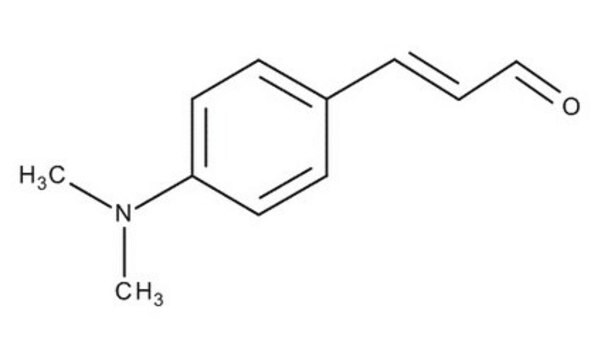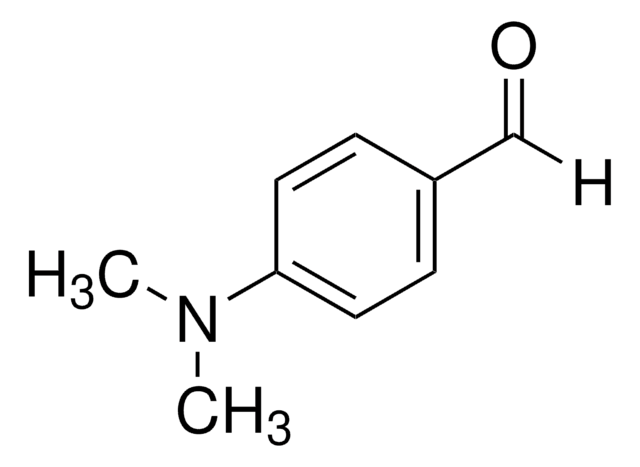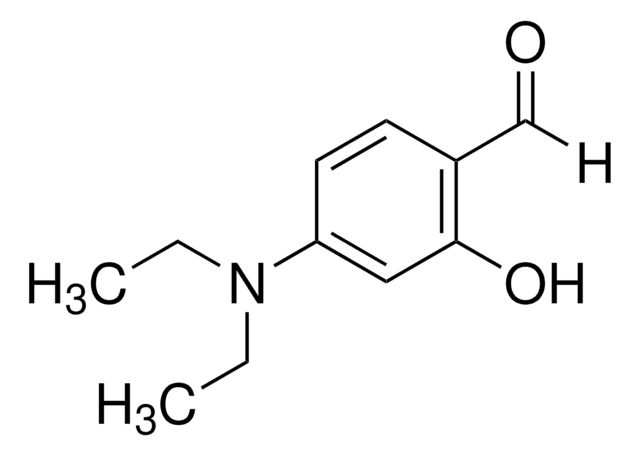49825
DMACA Reagent
suitable for microbiology
Synonym(s):
4-(Dimethylamino)-cinnamaldehyde solution
About This Item
Recommended Products
technique(s)
microbe id | specific enzyme detection: suitable
Quality Level
application(s)
agriculture
environmental
food and beverages
microbiology
suitability
Escherichia coli
Streptococcus spp.
SMILES string
[H]C(=O)\C=C\c1ccc(cc1)N(C)C
InChI
1S/C11H13NO/c1-12(2)11-7-5-10(6-8-11)4-3-9-13/h3-9H,1-2H3/b4-3+
InChI key
RUKJCCIJLIMGEP-ONEGZZNKSA-N
General description
Application
Components
Dimethylaminocinnamaldehye 1 g
Hydrochloric acid (concentrated) 1.0 ml
distilled water 99.0 ml
Other Notes
Signal Word
Warning
Hazard Statements
Precautionary Statements
Hazard Classifications
Met. Corr. 1
Storage Class Code
8B - Non-combustible corrosive hazardous materials
WGK
WGK 2
Flash Point(F)
Not applicable
Flash Point(C)
Not applicable
Personal Protective Equipment
Choose from one of the most recent versions:
Already Own This Product?
Find documentation for the products that you have recently purchased in the Document Library.
Articles
Sigma-Aldrich.com presents an article concerning Differentiation of Escherichia coli from coliforms.
Our team of scientists has experience in all areas of research including Life Science, Material Science, Chemical Synthesis, Chromatography, Analytical and many others.
Contact Technical Service






